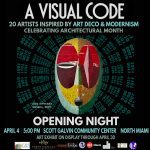About Jos:
Jos Vandenbreeden is an architect, architecture historian and professor emeritus at the Faculty of Architecture Sint-Lucas Brussels, Catholic University of Louvain (Belgium). As an architect he is specializing in the restoration and reconversion of the architectural and urbanistic heritage. So he restored the Solvay house in Brussels (1894-1902, Unesco World Heritage since 2000), the Art nouveau masterpiece by Victor Horta. He restores since 20 years the Art Deco Basilica Koekelberg (fig.1) (1922-1970) by the architect Albert van Huffel, in Brussels. This Basilica is one of the five largest churches in the world and also one of the most beautiful Art deco monuments. He rescued the former Radio building (fig.2) from demolition, an Art deco and Modernist building in Brussels, designed by the architect Joseph Diongre, 1933-1938. And he was the adviser for the restoration and the reconversion of this architectural monument in a Music and Arts Center. He restored and reconverted as Belle-Epoque Centre, three late 19th century villas in Blankenberge on the Belgian coast. He is working now on an architectural analysis and technical study of the Center for Fine Arts (fig.3) (1922- 1929) in Brussels, designed by Victor Horta in the context of the reconstruction and redevelopment of some music halls. As an architecture historian he made many architectural and urbanistic studies for monuments and sites in the context of restoration, reconversion and redevelopment of the quality of the environment and the integration of the heritage in our contemporary life. He organized many exhibitions and produced many publications on Belgian Art Nouveau architecture, the 19th Century, Art Deco and Modernism (see brief bibliography). He was in 1970 a co-founder and until 2017 coordinator of the research center and Architecture Archives – Sint-Lukasarchief. From 2017 a fusion was established between the Sint-Lukasarchief and the Foundation CIVA Brussels, where he is now administrator. CIVA’s collections are constituted of architecture archives and various productions of the practice of architecture, landscape architecture and gardens, and of the reflexion on urban ecosystems (civa.brussels).
Belgium: Great Deco Monuments
The architectural debate no longer dealt with innovation and the rejuvenation of eclectic architecture, and it was no longer a purely aesthetic debate. Architecture was now about ethics: the ethics of living, of life in a new society. The values evoked by Art Deco, and his physical appearances, are so divers that it is difficult to place all of Art Deco in Belgium under the heading of one architectural movement. Art Deco was just as much a laboratory as the short-lived Art Nouveau movement. In both movements, there was a lot of experimentation aimed at bringing architecture, craftsmanship and the decorative arts closer together. In the years immediately following the First World War, concrete came to be associated with modernity in architecture. Architecture grew more austere, moving towards the ‘destruction’ of ornament. This destruction take not place, however, and would not occur before pure Modernism set in.



